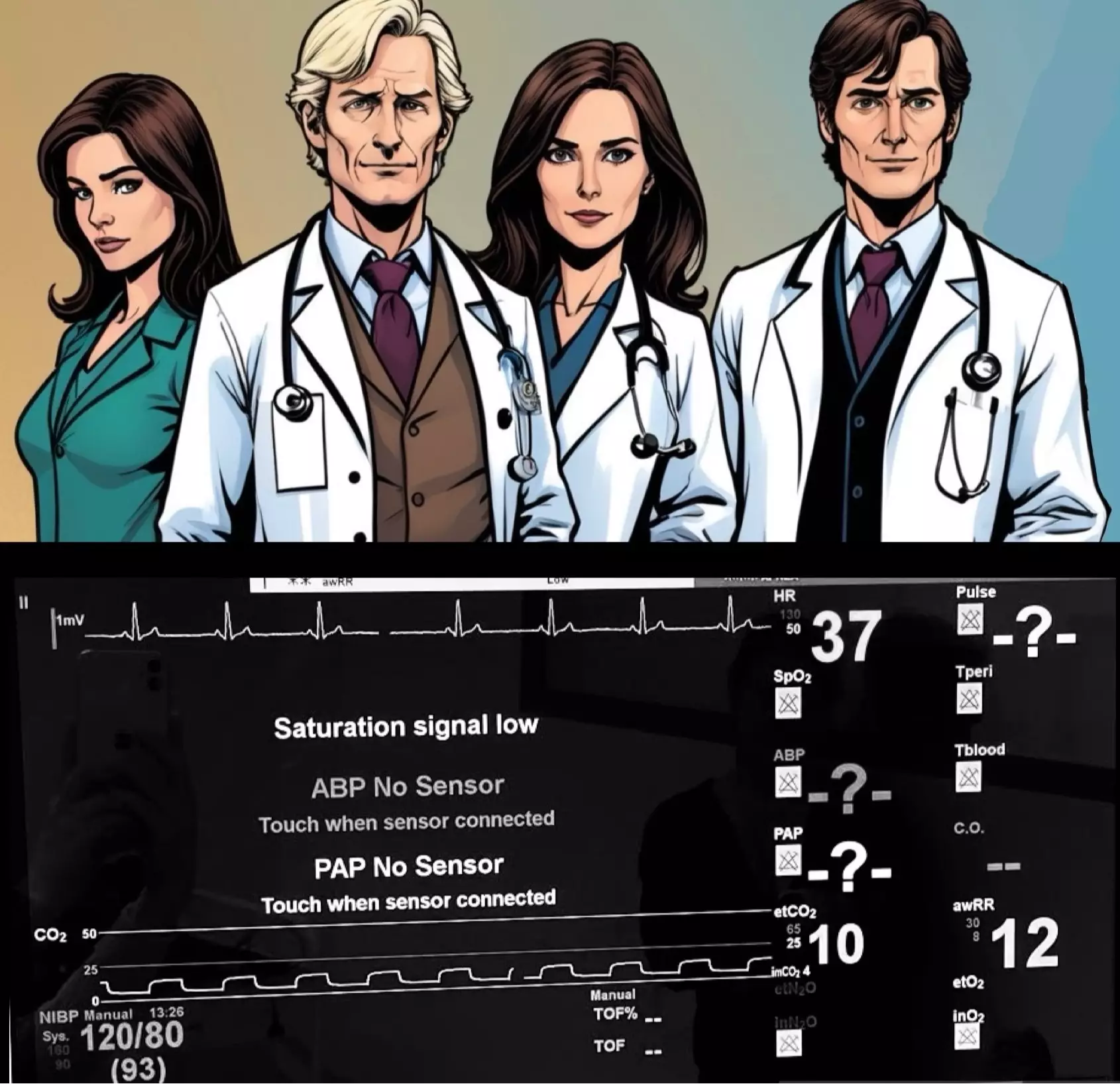Recognition of the cardiac arrest
Modern intensive medicine is characterized by availability of numerous devices, equipped with sensitive alarms to monitor patients, alerting us to even the slightest change in the patient's condition. In our scenario, we demonstrate several situations where excessive reliance on device monitoring can easily lead to incorrect diagnosis and treatment of a patient hidden behind the measured values.
Review
The presence of a physiological ECG curve doesn't exclude cardiac arrest. In such a case, it is a circulatory arrest with pulseless electric activity (PEA - Pulseless Electric Activity). Treatment includes cardiopulmonary resuscitation according to the ALS algorithm, administration of adrenaline and, abov eall, recognition of potentially reversible causes (4H/4T). In teaching CPR, more attention is often paid to defibrillation and management of shockable rhythms (ventricular fibrillation and pulseless ventricular tachycardia) than to cardiac arrest with PEA. However, in case of in-hospital cardiac arrests (IHCA), non-shocable rhythms - PEA or asystole, significantly predominate (up to 80%) over shocable rhythms. Recognizing cardiac arrest in the presence of organized ECG electrical activity can be difficult. For example, in pharmacologically sedated patients, unconscious patients with secured airways on artificial pulmonary ventilation, circulatory arrest can manifest only by the loss of the saturation signal and a drop in the EtCO2 value. The algorithm offers model situations of PEA-type cardiac arrest with regard to urgent recognition in accordance with current ERC recommendations.
Sources
VYMAZAL, Tomáš; MICHÁLEK, Pavel a KLEMENTOVÁ, Olga. Anesteziologie (nejen) k atestaci. 2nd, revised and expanded edition. Praha: Grada Publishing, 2023. ISBN 978-80-271-3898-2.
MALÁSKA, Jan; STAŠEK, Jan; KRATOCHVÍL, Milan a ZVONÍČEK, Václav. Intenzivní medicína v praxi. Jessenius. Praha: Maxdorf, [2020]. ISBN 978-80-7345-675-7.
SOAR, Jasmeet, et al. European Resuscitation Council Guidelines 2021: Adult advanced life support. Resuscitation. 2021, 161:115-151.
OLIVER, Tony I.; SADIQ, Usama a GROSSMAN, Shamai A. Pulseless Electrical Activity. Online. Treasure Island (FL): StatPearls Publishing, 2024. Available from: https://www.ncbi.nlm.nih.gov/books/NBK513349/. [cit. 2024-03-29].
Learning targets
2. Student knows, how to proceed when he identifies cardiac arrest with pulseless electrical activity.
3. Student understands the causes of the pulseless electrical activity and understands most common potential reversible causes.
Key points
2. In unconscious patients, with secured airways and on artificial lung ventilation, cardiac arrest can manifest only as a sudden change in EtCO2 and SpO2.
3. The solution of cardiac arrest with PEA is effective CPR, adrenaline administration and solving potentially reversible causes.
4. Reversible causes of cardiac arrest are so called 4H and 4T.





